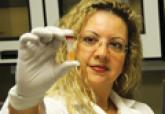Video

Amaal J. Starling, MD
At the 68th Annual Meeting of the AAN, Dr. Starling discussed how to decide when a patient with concussion is ready to return to school or sports...

VANCOUVER—Prescribed rest is an important component of treating concussion, but it may not be the most appropriate intervention for all patients and may worsen symptoms in some cases, said Anthony P. Kontos, PhD, at the 68th Annual Meeting of the American Academy of Neurology (AAN).
Anthony P. Kontos, PhD
“We need to move the discussion on concussion toward more active and targeted treatments,” said Dr. Kontos, Research Director of the University of Pittsburgh Medical Center (UPMC) Sports Medicine Concussion Program.Concussion is a heterogeneous injury with varying clinical profiles and recovery trajectories. Approaches to treatment should account for these differences and involve multidisciplinary teams when necessary, he said.
In October 2015, Dr. Kontos, Michael “Micky” Collins, PhD, and David O. Okonkwo, MD, PhD, directed a meeting with 37 participants from the fields of neurology, neuropsychology, neurosurgery, primary care, athletic training, and physical therapy to create a summary agreement that can assist clinicians with concussion treatment.
Nineteen guests, including representatives from professional sports organizations, the military, and public health, also attended the Targeted Evaluation and Active Management (TEAM) Approach to Treating Concussion meeting. The National Football League and UPMC sponsored the meeting, which was held in Pittsburgh.
Consensus documents have predominantly focused on things like the various definitions of concussion, how to assess concussion, and how to manage it, said Dr. Kontos. “We really wanted to focus on more of that end point of treatment and potentially more active treatment,” he said.
The TEAM participants developed and agreed upon 17 statements, which they plan to publish. At the AAN meeting, Dr. Kontos provided a brief review of some of the statements and discussed them in the context of recent research.
Rest’s Benefits and Limitations
Physical and cognitive rest, as part of an individualized treatment plan, are currently “the foundation of sport-related concussion management,” according to National Collegiate Athletic Association interassociation concussion guidelines. Rest after concussion conserves needed energy in the brain and reduces the likelihood of second impact syndrome and other catastrophic events, Dr. Kontos said. Furthermore, some studies have suggested that rest improves recovery. Brown et al reported in 2014 that athletes who self-reported more cognitive activity after a concussion took longer to recover than those who reported less cognitive activity.
However, the evidence to support rest is limited. In 2013, the Institute of Medicine and National Research Council published a report on sports-related concussion in youth that found little evidence regarding the efficacy of rest following concussion or to inform the best timing and approach for return to activity. Their statement “still resonates now,” Dr. Kontos said. “There’s very little empirical data to support what we do with rest. It’s largely an across-the-board policy that’s not data-driven, and we need to change that.” The TEAM group agreed “there is limited empirical evidence for the effectiveness of prescribed physical and cognitive rest, with no multisite trials for prescribed rest following concussion.”
Prescribed rest can have psychologic consequences, including emotional distress, depression, and anxiety. Rest allows individuals time to ruminate on their injury, which can exacerbate symptoms in self-report. Individuals who somaticize are particularly vulnerable to this effect. Jeremy M. Root, MD, of Children’s National Medical Center in Washington, DC, Dr. Kontos, and colleagues reported in April in the Journal of Pediatrics that patients who had high somatization scores were approximately five to seven times more likely to report an increase in symptoms at two weeks and four weeks, compared with those who were not in the highest quartile of somatization.
In addition, patients who are prescribed rest may think, “Wow, I must have a really bad injury such that I can’t do anything for a week.” This contextual framing effect may also influence the outcome, said Dr. Kontos.
Thomas et al in 2015 published the results of a randomized controlled trial that found that, after a concussion, patients ages 11 to 22 who were prescribed five days’ rest reported more daily postconcussive symptoms, compared with patients who were prescribed two days’ rest with progressive return to activity. Symptoms peaked at four days, and differences between groups remained at 10 days. “They have higher symptoms when they’re told to rest longer than if they’re told to rest less,” Dr. Kontos said. Clinically, there was no significant difference between groups in neurocognitive or balance outcomes, however.
The effect of treatment on the number of postconcussive symptoms may not be that straightforward, however. When Dr. Kontos, Dr. Thomas, and colleagues reanalyzed the data to look at patients who only reported symptoms (eg, headache, nausea, dizziness) but did not otherwise have early signs of concussion (eg, loss of consciousness, posttraumatic amnesia, disorientation, confusion), the symptoms-only group reported more symptoms at 10 days when prescribed five days’ rest, compared with two days’ rest with progressive return to activity. Patients who had early signs of concussion, however, reported fewer symptoms when prescribed five days’ rest versus two days’ rest with progressive return to activity.

At the 68th Annual Meeting of the AAN, Dr. Starling discussed how to decide when a patient with concussion is ready to return to school or sports...

